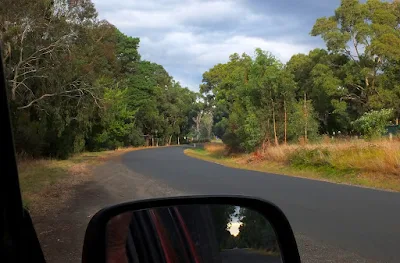I don’t know why, but ever since pre-teenagerhood, birds
have occupied my conscience. Yes, through much of my earlier years as a
teenager and young adult other matters were at the forefront of my mind –
school, sport, work, family, etc. I think I was normal, but I suspect for much
of that time, a fondness for our avi-fauna was ever-present in the further
reaches of my subconscious.
It was a bit later in life that I really became aware of how
my spirits were lifted at the sight of the magnificent aerial displays of a
Woodswallow or of hearing the call of the first Oriole to arrive each Spring in
my little patch of Gippsland.
And, not until retirement was I able to focus a little
deeper on why birds matter.
Many birds of course are beautiful. Many have glorious song,
(although Rossini’s ‘Thieving Magpie’ does not come close to the real thing),
but birds are important for much more than this.
 |
| Golden Whistler - a beautiful songster often seen on the edges of Drouin |
Birds occupy pretty much any habitat on our planet. The only
other animal species to do this are generally microscopic. Birds live in the
arctic and antarctic, the driest deserts and wettest forests, oceans, mountains
and plains. They live with us in our cities and towns.
Some birds are inquisitive of humans. Our own Grey Fantails
and Eastern Yellow Robins will sometimes fly around anyone that strays into
their territory. Others can be downright aggressive toward us – Magpies at
nesting time.
 |
| Eastern Yellow Robin on a friend's walking stick. |
Many birds are sedentary, seldom leaving their small patch
of habitat. Others fly thousands of kilometres each year on their amazing
migratory flight paths. In 2007, a Bar-tailed Godwit was recorded flying from
Alaska to New Zealand, non-stop, in 9 days, an astonishing 11,500km!
And, don’t believe that birds are unintelligent or don’t
enjoy some fun from time to time – check out this YouTube video of a wild Crow in
Russia snowboarding on a plastic lid!
Yes, all very well I hear you say, but do they matter?
Birds may be the last connection we have to the disappearing
natural world. Many birds are pollinators and seed dispersers, some eat
annoying pests like insects and rodents, a few are a food source themselves for
other animals and humans. In many situations, birds are fantastic
bio-indicators – they can tell us the health of an ecosystem.
Of course birds matter. They remind us of our own decency.
What right do we have to be the cause of their loss to the world? Birds may not
contribute to our economy but is that the highest standard we can ascribe them?
If we are so intelligent, shouldn’t we be helping to ensure their survival
rather than be the cause of their demise?
Sorry for the rant, I digress.
April is bird monitoring month for
the Friends of
Drouin’s Trees
Our members are conducting some surveys in various locations
of our beautiful town and the public is invited to join in.
 |
| Crystal Waters Drouin will be 'surveyed'. |
Surveys of between 1 and 2 hours duration will be conducted
…
Monday 02/04/18, 8am and 3pm.
Wednesday 04/04/18, 8am and 3pm.
Monday 09/04/18, 8am.
Thursday 12/04/18, 8am and 3pm.
Monday 16/04/18, 8am and 3pm.
 |
| 'Golden Whistler Reserve' in Drouin |
We will be meeting for car-pooling and instructions at the
Drouin Bowls Club car park at the above times. If you would like further
details, please email me – drouinwaresATgmailDOTcom – otherwise, just turn up,
preferably with your binoculars.
Want some more?
Europe faces biodiversity oblivion after collapse in French
birds, experts warn – The Guardian
Birds as environmental indicators – Environmental Science.org.
What do birds do for us – Audubon.
Threats to birds – Bird Life Australia.










